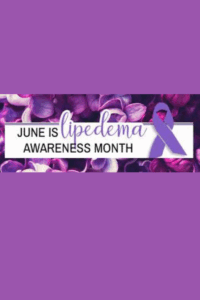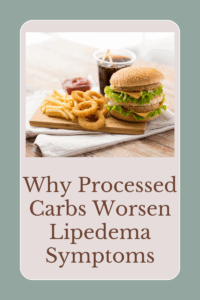Introduction to Lipedema
Have you heard of lipedema? Despite affecting over 18 million of women worldwide, this chronic condition remains widely misunderstood and underdiagnosed. Lipedema is a disorder characterized by an abnormal accumulation of fat in the lower body, leading to pain, swelling, and mobility issues. It predominantly affects women, often beginning around puberty, pregnancy, or menopause.
Understanding lipedema is crucial for raising awareness and supporting those living with the condition. This blog post aims to shed light on lipedema by exploring its signs and symptoms, causes, diagnosis, treatment options, and daily management strategies. We will also discuss the importance of advocacy and how you can contribute to increasing awareness.
Signs and Symptoms
Recognizing the signs and symptoms of lipedema is the first step toward effective management. Lipedema typically presents as a bilateral and symmetrical swelling of the legs, hips, and sometimes the arms. This distinguishes it from other conditions like lymphedema, which often affects only one limb.
The fat tissue in lipedema is often painful to the touch, and patients may experience a feeling of heaviness or discomfort in the affected areas. Unlike regular fat, lipedemic fat does not respond well to diet and exercise, which can be frustrating for those trying to manage their weight.
Other symptoms include easy bruising, a tendency for the skin to feel cool and soft, and increased sensitivity to pressure. It’s important to note that lipedema often progresses in stages, with symptoms worsening over time. Early diagnosis and intervention are key to managing the condition effectively.
Understanding Causes and Risk Factors
The exact cause of lipedema is not yet fully understood, but several factors are believed to contribute to its development. Genetics play a significant role, as lipedema often runs in families. Hormonal changes are also thought to trigger the onset of lipedema, which explains why it commonly begins during puberty, pregnancy, or menopause.
Other risk factors include obesity, sedentary lifestyle, and vascular issues. However, it’s important to distinguish between obesity and lipedema. While obesity is characterized by excess fat accumulation throughout the body, lipedema specifically affects the lower body and is resistant to traditional weight loss methods.
Research is ongoing to better understand the underlying mechanisms of lipedema and to develop more effective treatments. In the meantime, recognizing the risk factors and early signs can help individuals seek timely medical advice and intervention.
Diagnosis and Treatment
Diagnosing lipedema can be challenging due to its similarity to other conditions like lymphedema and obesity. A thorough clinical examination and patient history are essential for an accurate diagnosis. Medical professionals may use imaging techniques like ultrasound or MRI to distinguish lipedemic fat from other types of tissue.
Once diagnosed, several treatment options are available to manage lipedema. While there is no cure, treatments aim to alleviate symptoms, improve mobility, and enhance the quality of life. Compression therapy, including garments and bandages, can help reduce swelling and discomfort.
https://amzn.to/3MsN7wd I love this pair.
Manual lymphatic drainage (MLD) is a specialized massage technique that encourages fluid movement and reduces swelling. Combined with exercise, particularly low-impact activities like swimming or walking, MLD can help improve circulation and reduce pain.
In severe cases, surgical interventions like liposuction may be considered to remove lipedemic fat and improve mobility. However, surgery is often viewed as a last resort and should be discussed thoroughly with a healthcare provider.
Living with Lipedema
Living with lipedema requires a multifaceted approach to daily management. Maintaining a healthy lifestyle is crucial in managing symptoms and preventing the progression of the condition. Nutrition plays a vital role, and many experts recommend a low-carb or carnivore diet for individuals with lipedema.
Low-carb diets can help reduce inflammation and improve metabolic health, which may alleviate some symptoms of lipedema. A carnivore diet, focused on animal-based foods, further minimizes carb intake and can lead to noticeable improvements in pain and swelling. Consulting with a nutritionist or dietitian can provide personalized guidance on the best dietary approach.
Regular physical activity is essential, but it’s important to choose low-impact exercises that do not exacerbate pain or swelling. Swimming, walking, and cycling are excellent options for maintaining mobility and cardiovascular health.
Support groups and communities can provide emotional and practical support for individuals with lipedema. Connecting with others who share similar experiences can foster a sense of belonging and provide valuable insights into managing the condition.
Join the community here: https://www.facebook.com/groups/7021999704562921
Lipedema Awareness and Advocacy
Raising awareness about lipedema is crucial for improving diagnosis and treatment outcomes. Many individuals with lipedema go undiagnosed for years, leading to unnecessary suffering and complications. By spreading knowledge about the condition, we can encourage early diagnosis and intervention.
Advocacy efforts can take many forms, from participating in awareness campaigns to supporting research initiatives. Social media platforms provide a powerful tool for sharing personal stories, educational content, and resources related to lipedema.
Healthcare professionals also play a vital role in advocacy by staying informed about the latest research and treatment options. Educating colleagues and patients about lipedema can help reduce stigma and promote a better understanding of the condition.
Conclusion
Lipedema is a challenging and often misunderstood condition that affects millions of women worldwide. By understanding its signs and symptoms, causes, and treatment options, we can better support those living with lipedema and contribute to raising awareness.
A multifaceted approach to management, including proper diagnosis, effective treatments, and daily lifestyle adjustments, can significantly improve the quality of life for individuals with lipedema. Advocacy and community support are essential in fostering a greater understanding of the condition and encouraging early intervention.
We encourage you to share this post to increase awareness and support for those living with lipedema. Together, we can make a difference in the lives of many. For personalized guidance and support, consider booking a consultation with a healthcare professional specializing in lipedema.
Supporting Your Wellness
OX Coach Cindy








